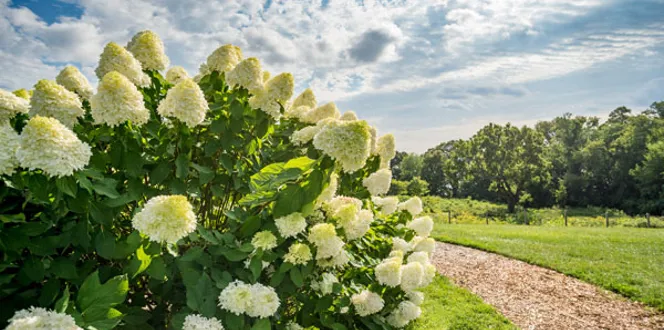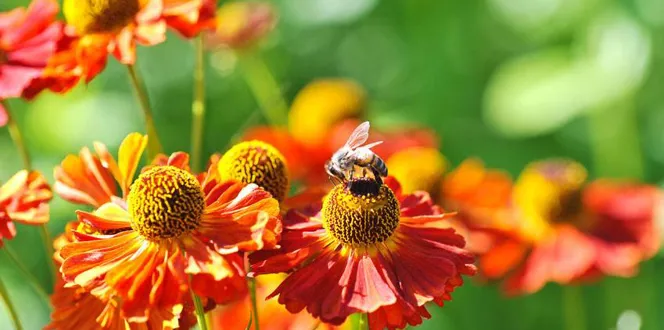Nothing beats the big blossoms of a hydrangea plant covering the bright green shrubs they grow on.
Bountiful, beautiful, pom-pom-shaped flower heads brighten your garden in shades of bright white to bubblegum pink to lovely lilac to sky blue. And the flowers are long-lasting, meaning you get to enjoy them all summer long.
No wonder hydrangeas are so popular in home landscapes. So it certainly can be frustrating when your hydrangea is not blooming.
While hydrangeas can be pretty easy to grow, it can be frustrating when you don’t get the massive blooms and color you were expecting. That’s where focusing on proper care can ensure you get the long-lasting flowers you crave year after year.
Let’s look at what would cause a hydrangea not to boom and how you can change the outcome with some simple maintenance tips and tricks.
Reasons Why Hydrangeas Aren’t Blooming
Like any other plant, to get optimum growth, which includes blooming capabilities, you want to ensure the right plant is located in the right place.
Choosing hydrangea species that fit your plant hardiness zone is an important first step in getting the best performance from your hydrangeas. This is because different plants can handle different growing conditions, and the best plants for your yard will only thrive in your specific area’s climate.
There are 6 species of hydrangeas commonly grown in American gardens. Let’s review them briefly.
- Hydrangea macrophylla - If you’re in USDA zones 5 to 11, this bigleaf hydrangea is a good one, offering a 6- to 10-foot height and spread and flowers in whites, pinks, blues, purples, and reds from June to October.
- Hydrangea arborescens - For partial shade areas in USDA zones 3 to 9, this smooth hydrangea boasts white and pink flowers from June through September. Flowers bloom on new growth.
- Hydrangea paniculata - If you want cone-shaped,white flowers from June to September, try this variety for USDA zones 3 to 8.
- Hydrangea quercifolia - In USDA zones 5 to 9, this oakleaf hydrangea offers white to purple/pink flowers in July through September.
- Hydrangea anomala ssp. petiolaris - In USDA zones 4 to 8, this climbing hydrangea offers white, lacy flowers from May to July.
- Hydrangea serrata - Referred to as a mountain hydrangea, this plant does best in USDA zones 6 to 9, offering pink or blue lacecap hydrangeas from June to August.
Once you have the right plant matched to the right location, then you can troubleshoot some specifics to figure out what makes a hydrangea not bloom.
Weather
Weather can certainly be a factor in what makes a hydrangea not bloom.
One instance of this is late spring frost which can stunt or kill flower buds. Protecting hydrangeas with some temporary burlap cover when frost is in the forecast could help.
Drought can also be the cause of inadequate flower production. If your hydrangeas suffered drought stress last summer, that could be a reason you’re experiencing fewer blooms this year. Make sure to keep your soil continuously moist, but well-drained to prevent this.
Sunlight
What would cause a hydrangea not to bloom? Too much or too little sun could be a factor.
Most hydrangeas require at least 3 to 4 hours of direct sunlight daily to bloom. And they prefer early morning sunlight or dappled sunlight in the afternoon. Full afternoon sun can be a bit too intense. Hydrangea paniculata can tolerate the most sun.
Fertilizer
If your hydrangea is not blooming, another reason could be too much nitrogen. This boosts the foliage production but not floral production.
Applying a fertilizer high in phosphorus in early spring and mid-summer will promote blooming.
Hydrangea also love soil that leans toward a more acidic pH.
Pruning
When pruning your hydrangeas, it’s critical to get the timing right to avoid hydrangeas not blooming.
Proper pruning timing is based on your hydrangea type. Since some hydrangeas bloom on old wood (growth from the last season) and others bloom on new wood (growth happening this season), you risk removing bloom-producing stems if you’re unsure of which hydrangea type you’re blooming.
Prune hydrangeas that bloom on new growth in late winter to maximize new growth and the number of flowers you’ll get. Prune hydrangeas that bloom on old growth right after their flowers have faded so they can develop wood that will be old by the time the next season’s flower buds emerge.
If you have doubts about which hydrangea you have or when to prune, trim only old flower heads and leave the rest until spring. June is usually the safest time to prune off any stems that have not produced leaves.
Pruning is important for hydrangeas because you don’t want to be left with a tangled mass of woody stems on plants that produce smaller flowers. Regular pruning helps maintain their shape and encourage new growth.





